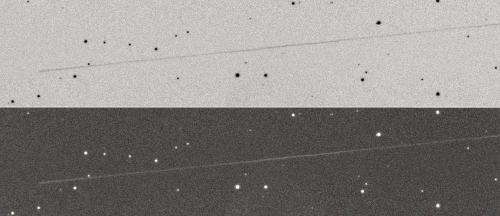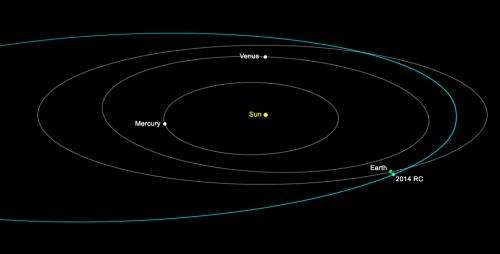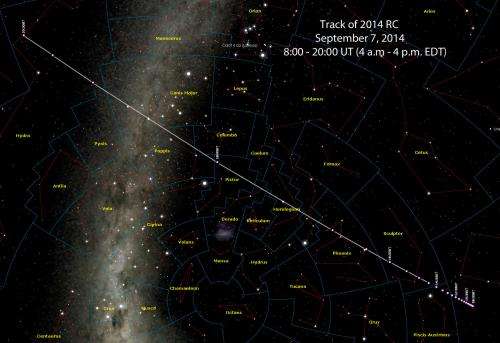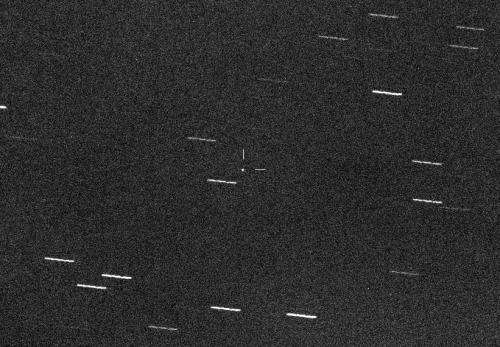Asteroid 2014 RC photographed 30 minutes before closest approach to Earth today. During this minute-long time exposure the asteroid covered more than 3/4 degree of sky. Zippy! Credit: Ernesto Guido, Nick Howes, Martino Nicolini
Earth-approaching asteroid 2014 RC ripped pass Earth today, got its orbit refashioned by our planet's gravity and now bids us adieu. I thought you'd like to see how fast this ~60-foot-wide (20-meter) space rock moved across the sky. The team of observers at Remanzacco Observatory in Italy photographed it remotely with a telescope set up in Australia. 30 minutes before closest approach to Earth of 25,000 miles (40,000 km), 2014 RC was traveling at the rate of 49.5 arc minutes (1.6 times the diameter of the full moon) per minute.
The orbit of 2014 RC occasionally brings it close to Earth as it did today September 7, 2014 when it passed less than 1/10 the distance of the moon to the Earth. The asteroid orbits the sun every 1.5 years. Credit: NASA/JPL-Caltech
At the time, the asteroid glowed at magnitude +11.2, bright enough to see in a 4.5 inch telescope even in the bright moonlit sky at the time. Let's try to get a feel for its speed. Just to keep 2014 RC centered in the field of view, you'd have to continually move the telescope to follow it as it you were tracking an airplane or satellite. What a thrill it must have been for observers in Australia who got the ride of their life across the heavens hanging onto this fleet rock with their eyeballs. In an hour's time, centered on closest approach, the asteroid traveled approximately 48º. That more than twice the length of the constellation Orion!
2014 RC accelerates across the sky from 4 a.m. to 4 p.m EDT in this path created by Gianluca Masi using SkyX Pro software and the latest positions from JPL.
As 2014 RC blew by, its orbit was bent by Earth's gravity and sent on a new trajectory. If this sounds familiar, we deliberately performed the same maneuver for the first time with the Voyager I and II spacecraft back in the late 1970s and early 1980s. A rare planetary alignment allowed scientists to swing the probes near Jupiter and Saturn to gain speed and shape their orbits for future encounters. Such gravity assist maneuvers are now commonplace.
Space rock exposed! Gianluca Masi, who runs the Virtual Telescope Project, tracked 2014 RC during his time exposure, so it shows up as a tiny dot instead of a streak. Credit: Gianluca Masi
No doubt 2014 RC will approach Earth again, but no threatening encounters are in the cards for at least 100 years. For now we're grateful it passed safely while inspiring wonder at what the solar system can throw at us.
Source: Universe Today



























